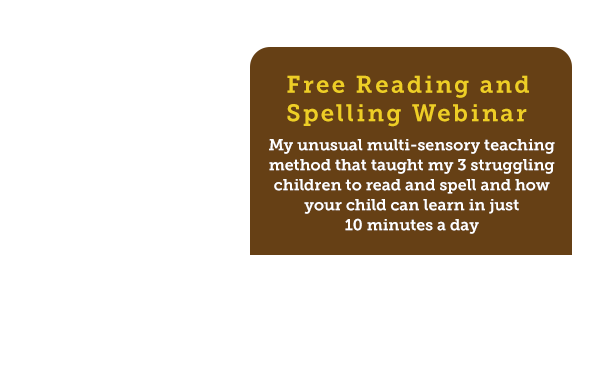Asperger’s Syndrome
Provided with the assistance of The University of Newcastle, NSW Australia – You will find more great information sheets on their website.
Overview
Asperger’s Syndrome or (Asperger’s Disorder) is a neurobiological disorder where there is normal intelligence and language development, but also where there are autistic-like behaviours and marked deficiencies in social and communication skills. Although Hans Asperger published a paper in 1944, it wasn’t until 1994 that Asperger’s Syndrome was recognised as a disability and only in the past few years have professionals and parents acknowledged Asperger’s Syndrome. Some professionals feel that Asperger’s Syndrome is the same as High Functioning Autism, while others feel that it is better described as a Nonverbal Learning Disability.
People with Asperger’s Syndrome may exhibit a variety of characteristics and the disorder can range from mild to severe. There may be marked deficiencies in social skills, and difficulties with transitions or changes and prefer sameness. People with Asperger’s Syndrome often have obsessive routines and may be preoccupied with a particular subject of interest. They have a great deal of difficulty reading nonverbal cues (body language) and very often have difficulty determining proper body space. People with Asperger’s Syndrome may be overly sensitive to sounds, tastes, smells, and sights, and can have an acute sense of touch. They may react strongly to light and sound that is not obvious to others. It’s important to remember that the person with Asperger’s Syndrome perceives the world very differently. Therefore, many behaviours that seem odd or unusual are due to those neurological differences and not the result of intentional rudeness or bad behaviour.
By definition, those with Asperger’s Syndrome have a normal IQ and many individuals (although not all), exhibit exceptional skill or talent in a specific area. Because of their high degree of functionality and their naiveté, those with Asperger’s Syndrome are often viewed as eccentric or odd and can easily become victims of teasing and bullying. While language development seems, on the surface, normal, individuals with Asperger’s Syndrome often have deficits in pragmatics and pitch, stress and rhythm of speech. Vocabularies may be extraordinarily rich however, persons with Asperger’s Syndrome can be extremely literal and have difficulty using language in a social context. They can also have problems with motor coordination.
Because behaviour can sometimes mean that the person is seen as inattentive and easily distracted, many receive the incorrect diagnosis of ADD or ADHD.
Effects of the condition
It is important not to generalise about the effects of Asperger’s Syndrome as each person may exhibit different behaviours to different degrees; however, the following is a list of factors that may occur:
- Tendency to interrupt
- Tendency to make irrelevant comments
- Tendency to talk on one topic over the top of others who are talking
- Difficulty understanding complex language, follow directions and understanding intent of words with multiple meanings
- Tendency to have difficulty with change or change of subject – particularly unexpected changes
- Difficulty understanding ‘rules’ of social interaction
- May seem naive
- May interpret literally what is said – can have difficulty understanding ‘puns’ or sarcastic humour
- Difficulty reading other people’s body language or emotions
- May lack tact
- Problems with social distance and personal space
- May have difficulty understanding ‘unwritten rules’ and when learnt, they may apply them rigidly
- May have a very narrow range of interests – but will often have an extremely good knowledge about those particular interests
- May have poor concentration and will go off task, be disorganised, and be easily distracted
- May have poor organisational skills
- May have poor motor co-ordination
- Usually average or above average intelligence
- Good recall of factual information
- May have poor problem-solving skills, lateral thinking skills and ability to comprehend abstract concepts
- Can be very good at word recognition
- May do well at mathematical comprehension, but have difficulty with problem-solving concepts
- May have difficulty coping with social and emotional demands of study
- Can be easily stressed
- Often have low self esteem
- May have difficulty with making mistakes
- May be prone to depression
- May have rage reactions and temper outbursts
- Most common sensitivities involve sound, touch, taste, light, intensity, colours and aromas
Appropriate adjustments in the tertiary education environment
As each student will have different needs, it is important to negotiate these needs on an individual basis. The following is a list of adjustments that may assist the student.
General
- Make book and reading lists available prior to the commencement of lectures (preferably at least two weeks prior to the commencement of the semester)
- Provide students with chapter outlines or study guides. These should also be available at least two weeks prior to the commencement of semester
- Where possible, provide any written work in electronic format – either in an accessible format on the web, or on disk. This allows the student to reproduce the material in alternative formats (eg large print, alternative colour print and background, via screen readers)
- If possible, meet with the student prior to, or early in the semester. Discuss the student’s needs and attempt to accommodate these needs in lectures and assessment criteria
Lecture/classroom adjustments
- Use a variety of teaching methods (eg use overheads, videos, handouts, study sheets, group participation, Q&A)
- Have print copies of overheads available for students prior to the commencement of lectures
- Repeat and rephrase important points
- Speak clearly and face the students whenever talking
- Always verbalise any points that are either written on the board or put up on overheads
- Use a microphone whenever the equipment is provided
- Tape lectures and place in the library so students are able to copy
- Use simple language and stay on topic
- Whenever new processes or procedures are introduced, or whenever directions are given, ensure that stages or sequences are made clear and are explained verbally as well as in written format
- Present information on a range of formats – handouts, worksheets, overheads, videos, using diagrams, lists, flow charts, etc
- Have regular breaks in long lectures – this will assist to prevent ‘information overload’
- Avoid putting the student on the spot by targeting them for questions or reading aloud in class – unless the student has indicated their willingness to participate (i.e. raised hand etc)
- Be flexible in relation to ‘participation’ in tutorials. High anxiety levels of the student may mean that they avoid participating in discussions during tutorials
- Supply comprehensive lecture notes
- At the beginning of each lecture, outline the key points that will be raised in the lecture – reiterate these and at the conclusion of the lecture
- Try and make sure there is good lighting in the lecture theatre/classroom. If possible adjust blinds to ensure there is no glare on the board or where overheads are being projected
- Attempt to keep extraneous sound and visual stimuli to a minimum
- If behaviour in the class is inappropriate (i.e. interrupting, outburst etc) be careful not to humiliate the student in front of the class. It may mean that you set a short task for the class to give you the opportunity to talk quietly to the student
Assignments
- Be flexible with deadlines and extensions
- Provide clear feedback to the student both verbally and in writing
- Consider negotiating an individual learning program for students with Asperger’s Syndrome. This can include:
- Flexible deadlines for assignments to take into account the effects of their disability and the requirements of other subjects
- Alternative marking arrangements such as allowing the student to hand in a ‘draft’ for comment prior to submitting their final paper
- Consider setting alternative assignments (of commensurate level) where a student can work on a few selected texts rather than having to read copious amounts of text
Examinations
- Allow extra time in formal exams, school based exams and class tests
- Allow the student to complete oral exams
- Avoid multiple choice questions – particularly where there are only slight variations in the answer options
- Allow the student to use a PC with spellchecker
- If the student requires natural or non fluorescent lighting, make sure there is an appropriate room available
- The student may need a private room
- The student may require a split exam
- Keep examination instructions clear and short. Use simple language. Avoid jargon unless it is crucial to the inherent requirements of the exam
- Allow time for rest breaks
- Allow the student to take in food, drink and medication if required
- The student may need to leave the room – allow this and if necessary have an invigilator accompany them
*Remember: Alternative Adjustments is about providing the opportunity for equality, not the attainment of a particular outcome. A student with a disability is still required to present work that is of a recognised standard. Providing flexibility in the process of learning does not mean that the subject standards are lowered.
This resource on Asperger’s and Autism has been provided with the assistance of The University of Newcastle, NSW Australia – You will find more great information sheets on their website.



















